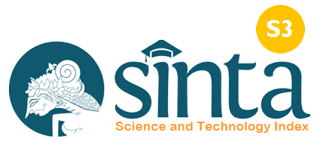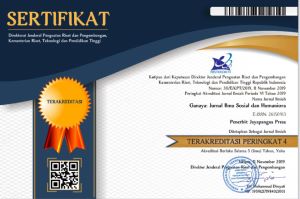Pengaruh Simulasi OSCE terhadap Kesiapan Keterampilan Klinis Mahasiswa Kebidanan
Systematic Literature Review
DOI:
https://doi.org/10.37329/cetta.v8i4.4882Keywords:
OSCE Simulation, Clinical Skills, Midwifery Students, Health Education, Learning TechnologyAbstract
Midwifery education faces challenges in preparing students for diverse clinical situations, where the gap between theoretical knowledge and practical application becomes a crucial problem affecting the quality of maternal and neonatal healthcare services. This study aims to systematically analyze the effect of OSCE simulation on clinical skills readiness of midwifery students through systematic literature review, with emphasis on the novelty of high-fidelity technology and virtual reality implementation in midwifery OSCE assessment. The research method used systematic literature review with analysis of ten scientific articles consisting of five international journals and five national journals published between 2021-2025, with systematic search through PubMed, ScienceDirect, Google Scholar, Portal Garuda, and DOAJ databases using relevant keywords, then analyzed using thematic analysis and narrative synthesis according to PRISMA guidelines. Findings show that OSCE simulation significantly improves clinical skills readiness of midwifery students, with innovative high-fidelity and virtual reality technologies demonstrating superior effectiveness - VR technology achieving skills improvement up to 27.70%, high-fidelity simulation providing average improvement of 13.89 points, and competency-based simulation showing significant improvement (p < 0.001) with effects lasting up to 6 weeks. The novelty lies in the integration of immersive technologies that transform traditional OSCE assessment into technology-enhanced learning experiences, enabling midwifery students to practice complex obstetric scenarios safely. Clinical skills readiness is measured through four main attributes: professional skills, communication, self-management, and self-confidence. OSCE simulation proves effective in comprehensively improving midwifery students' clinical skills readiness, with implementation recommendations for high-fidelity technology adoption, competency-based approaches, and integrated digital platforms for learning optimization in midwifery education.
References
Abbasi, A., Bazghaleh, M., Fadaee Aghdam, N., Basirinezhad, M. H., Tanhan, A., Montazeri, R., & Mirhosseini, S. (2023). Efficacy of Simulated Video on Test Anxiety in Objective Structured Clinical Examination Among Nursing and Midwifery Students: A Quasi-Experimental Study. Nursing Open, 10(1), 165–171.
Alsalamah, Y. S., Alsalamah, T. S., Saad Albagawi, B., Alslamah, T., El Tassi, A., & Fawaz, M. (2023). The Relationship Between Work Readiness and Perceived Clinical Competence Among Graduates Transitioning Into Professional Practice. International Journal of Africa Nursing Sciences, 18(March), 100555.
Alshammari, A., Innab, A., Nahari, A., Alanazi, H., Alanazi, R., & Almukhaini, G. (2025). Impact of Simulation-Based Learning on Learning Loss Among Nursing Students: A Quasi-Experimental Study. International Review of Research in Open and Distributed Learning, 26(1), 80–98.
Bramer, W. M., De Jonge, G. B., Rethlefsen, M. L., Mast, F., & Kleijnen, J. (2023). A Systematic Approach to Searching: An Efficient and Complete Method to Develop Literature Searches. Journal of the Medical Library Association, 106(October), 531–541.
Brogaard, L., Kierkegaard, O., Hvidman, L., Jensen, K. R., Musaeus, P., Uldbjerg, N., & Manser, T. (2019). The Importance of Non-Technical Performance for Teams Managing Postpartum Haemorrhage: Video Review of 99 Obstetric Teams. BJOG: An International Journal of Obstetrics and Gynaecology, 126(8), 1015–1023.
Chan, S. C. C., Choa, G., Kelly, J., Maru, D., & Rashid, M. A. (2023). Implementation of Virtual OSCE in Health Professions Education: A Systematic Review. Medical Education, 57(9), 833–843.
Cooper, S., Cant, R., Porter, J., Sellick, K., Somers, G., Kinsman, L., & Nestel, D. (2010). Rating Medical Emergency Teamwork Performance: Development of the Team Emergency Assessment Measure (TEAM). Resuscitation, 81(4), 446–452.
Guerrero, J. G., Hafiz, A. H., Eltohamy, N. A. E. H., Gomma, N., & Al Jarrah, I. (2021). Repeated Exposure to High-Fidelity Simulation and Nursing Interns’ Clinical Performance: Impact on Practice Readiness. Clinical Simulation in Nursing, 60, 18–24.
Hakimi, M., Kheirkhah, M., Abolghasemi, J., & Hakimi, R. (2021). Investigating the Effect of Neonatal Resuscitation Simulation Using a Competency-Based Approach on Knowledge, Skill, and Self-Confidence of Midwifery Students Using Objective Structured Clinical Examination (OSCE). Journal of Family Medicine and Primary Care, 6(2), 169–170.
Hasyim, A. R., Haslan, H., Sapartina, N. E., & Rahmawati. (2025). Pengaruh Media Pembelajaran Berbasis Virtual Reality Terhadap Peningkatan Keterampilan Manajemen Aktif Kala III Mahasiswa Kebidanan. Health Information: Jurnal Penelitian, 17(2), 186–194.
Konlan, K. D., Damiran, D., & Lee, T. W. (2024). Clinical Readiness for Practice of Nursing Students: A Concept Analysis. International Journal of Environmental Research and Public Health, 21(12).
Meyer, J. K. V., Diaspro, G., Muñoz, I., Burmeister, C., & García-Huidobro, D. (2023). A Mixed-Methods Evaluation of the ¡Vamos por Más! Parenting Program Implementation in Chile. JBI Evidence Implementation, 21(1).
Nair, M. A., Muthu, P., & Abuijlan, I. A. M. (2024). The Effectiveness of High-Fidelity Simulation on Clinical Competence Among Nursing Students. SAGE Open Nursing, 10.
Page, M. J., McKenzie, J. E., Bossuyt, P. M., Boutron, I., Hoffmann, T. C., Mulrow, C. D., … Moher, D. (2021). The PRISMA 2020 Statement: An Updated Guideline for Reporting Systematic Reviews. The BMJ, 372.
Pollock, D., Peters, M. D. J., Khalil, H., & McInerney, P. (2022). Recommendations for the Extraction, Analysis, and Presentation of Results in Scoping Reviews. JBI Evidence Synthesis, 21(3), 520–532.
Rahmawati, V., Casman, C., Rosliany, N., Silalahi, M., Yesayas, F., Kamal, M., & Utami, R. (2023). Pelatihan Objective Structured Clinical Examination (OSCE) Sebagai Upaya Peningkatan Kesiapan Program Exit-Exam Mahasiswa Keperawatan. Buguh: Jurnal Pengabdian Kepada Masyarakat, 3(1), 11–18.
Sari, R. H., & Pretty, Y. (2025). Pengalaman Mahasiswa Kebidanan Dalam Menghadapi Ujian Objective Structured Clinical Examination. Indonesia Journal of Public Health, 3(1), 50–57.
Wu, N., Li, W., Huang, R., & Jiang, H. (2024). Effect of Simulation-Based Training Workshop on Obstetric Emergency Team Collaboration and Communication: A Mixed Study. Frontiers in Medicine, 11(March), 1–10.
Yuliawati, D., & Mansur, H. (2023). Pengembangan Website OSCE Dalam Optimalisasi Pemanfaatan Media Pembelajaran Digital Berbasis Web di Jurusan Kebidanan Polkesma. Jurnal ILKES, 14(1), 119–125.
Yunas, A. A. (2025). Implementasi Kurikulum Berbasis Keterampilan Dalam Program Pendidikan Kebidanan. Cetta: Jurnal Ilmu Pendidikan, 8(4), 206–213.
Downloads
Published
How to Cite
Issue
Section
License
Copyright (c) 2025 Tirsa Aprilia Dude

This work is licensed under a Creative Commons Attribution-ShareAlike 4.0 International License.
An author who publishes in the Cetta : Jurnal Ilmu Pendidikan agrees to the following terms:
- Author retains the copyright and grants the journal the right of first publication of the work simultaneously licensed under the Creative Commons Attribution-ShareAlike 4.0 License that allows others to share the work with an acknowledgement of the work's authorship and initial publication in this journal
- Author is able to enter into separate, additional contractual arrangements for the non-exclusive distribution of the journal's published version of the work (e.g., post it to an institutional repository or publish it in a book) with the acknowledgement of its initial publication in this journal.
- Author is permitted and encouraged to post his/her work online (e.g., in institutional repositories or on their website) prior to and during the submission process, as it can lead to productive exchanges, as well as earlier and greater citation of the published work (See The Effect of Open Access).
Read more about the Creative Commons Attribution-ShareAlike 4.0 Licence here: https://creativecommons.org/licenses/by-sa/4.0/.





